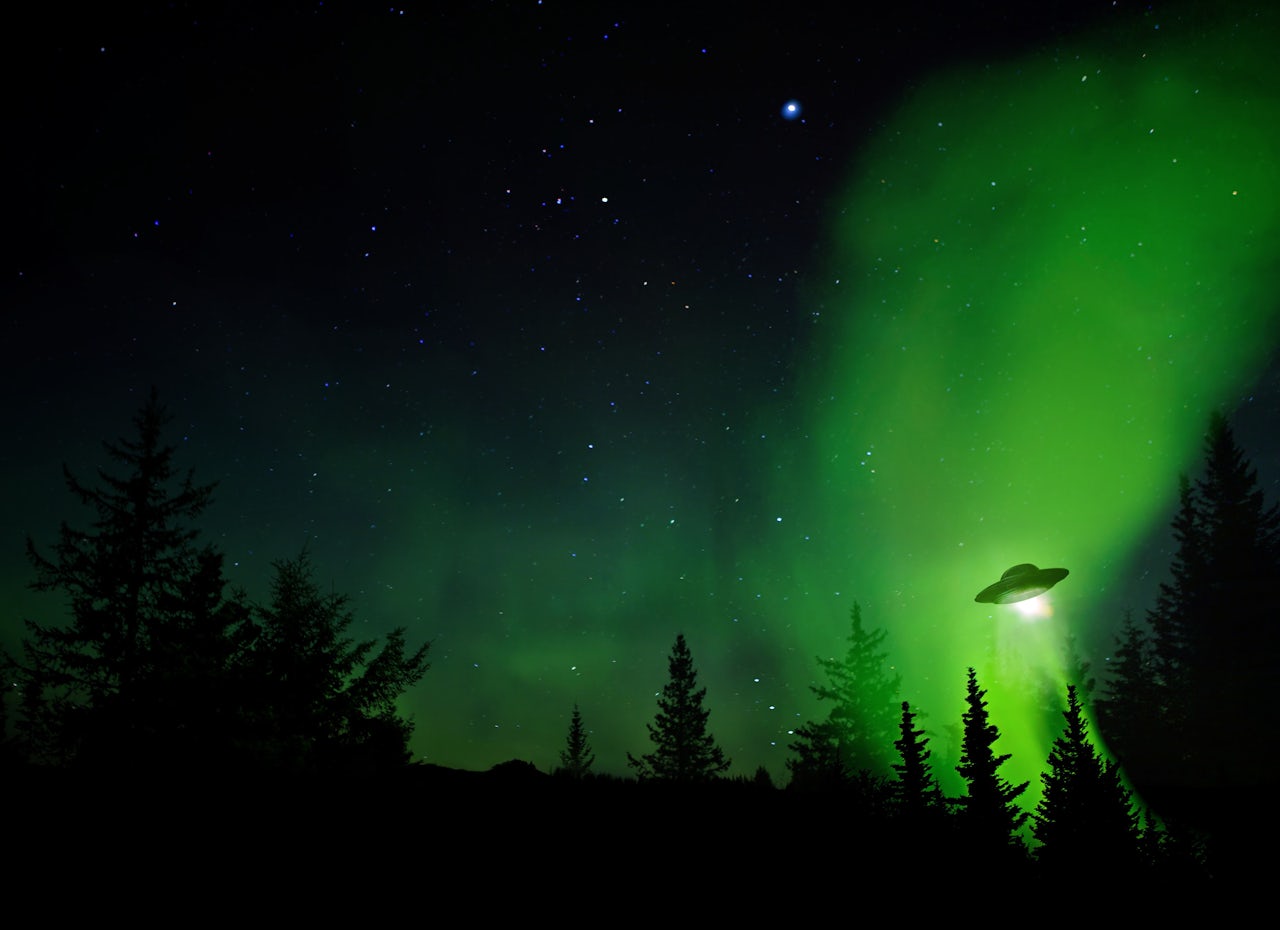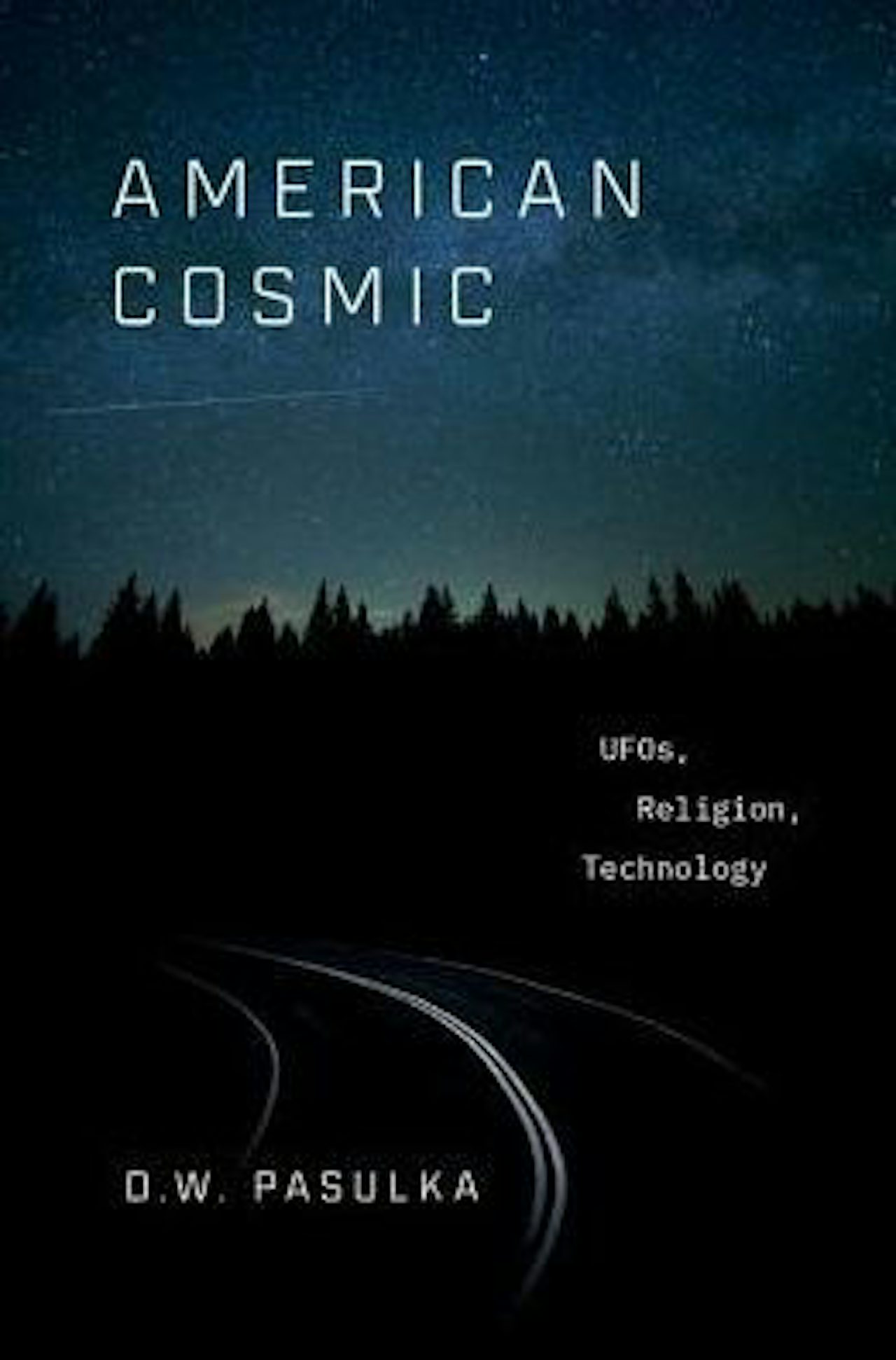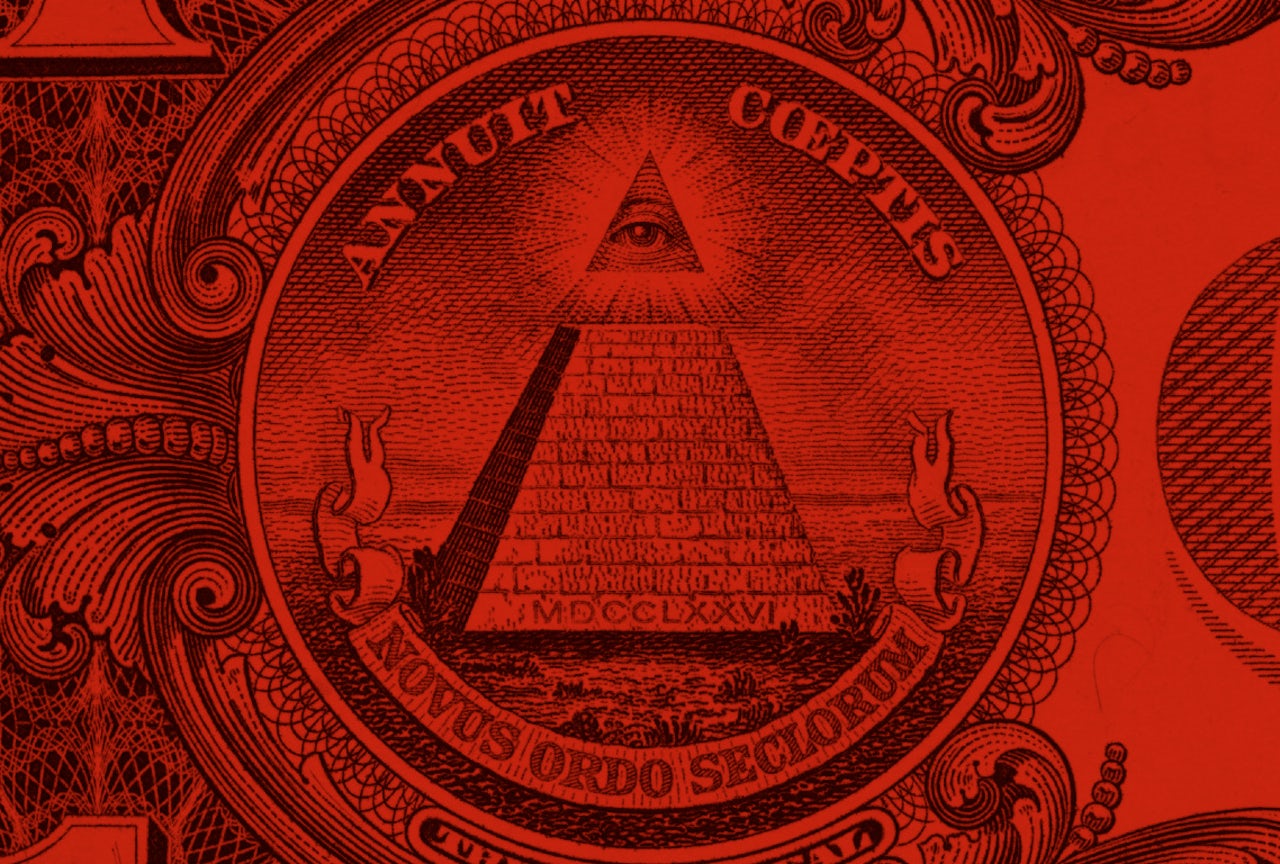The aliens have landed.
Or at least, they’re about to. That’s a reasonable takeaway when a renowned Harvard astronomer publicly declares, without apparent fear of repercussion, that he believes an alien spaceship may be orbiting our planet.
Belief in the little green men (or tall, suspiciously Nordic, hyper-enlightened space brethren, depending on whose accounts you believe) has long been a one-way ticket to social disrepute. It belongs to the chainsmoking Nevada diner waitress, the virginal malcontent reading anti-Semitic lizard people websites in his mother’s basement, the aunt whose minivan is littered with pamphlets on lesser-known Marian apparitions and dire end-times prophecies, the bearded ’70s peace-and-love guru who later turned out to be a sex criminal. It is precisely three steps above joining the Black Hebrew Israelites.
But that seems to be changing. A new book by D.W. Pasulka — professor and chair of the department of philosophy and religion at the University of North Carolina Wilmington — American Cosmic: UFOs Religion, and Technology, focuses not on grassroots investigative societies or marginal cults, but on UFO believers in the halls of power.
Her narrative begins on a drive through the hills with pioneering computer scientist, venture capitalist, and ufologist Jacques Vallee. “Silicon Valley is full of secrets,” he tells her. It ends in the Vatican Secret Archives (alas, not because the Ultimate Clue lies steganographically hidden in a Templar codex).
Along the way, Pasulka meets “Tyler,” a biomedical technology mogul associated with the U.S. space program. Tyler is the most curious part of a curious book. Like most of the scientists, government researchers, and tech giants Pasulka quotes, Tyler’s real name remains a secret. But Pasulka has presumably done scholarly due diligence on his background, which would otherwise be hard to believe: Tyler has over 40 biotech patents to his name, many of which he believes were communicated to him by non-human intelligence. He works in a government program where, according to him, the kind of intricate security-clearance labyrinths one might find in an X-Files episode are the norm. “I don’t know who is responsible for putting me on these jobs. I think that somehow they are responsible for it. My own direct boss doesn’t know what I do. This is how the program works.”
Pasulka describes him breezing through airports without getting stopped by security: “We arrived at the airport, and Tyler sailed right past security, past first class, past economy class, and out the other side. He seemed to be literally beyond the law.” His name unlocks doors at the Vatican. In his official capacity as a researcher with the U.S. space program, one of his roles is merely to be at certain places at certain times — his superiors believe, apparently that his physical presence produces certain outcomes at experiments and rocket launches.
“Certain outcomes,” is frustrating circumlocution, but it embodies a tension fundamental to the book. Pasulka documents the end of a long cultural shift regarding UFOs, as it moves from a marginal fringe to a major belief system. Part of this shift is what Jacques Vallee calls the “Invisible College,” the network of credentialed, well-placed researchers seriously investigating the phenomenon. “The phenomenon” is Vallee’s carefully neutral term for the collection of commonly attested events and effects that make up “UFO” sightings. The term is useful for those trying to apply a scientific or scholarly framework, because it makes no claims about the origins. And in fact, Vallee does not believe that what people commonly identify as extraterrestrials actually come from space. Vallee is agnostic on their actual origins, but at various points has posited that they may be some sort of window into another dimension, or an illusion created for psychological manipulation.
To decent Romans, Christianity was a weird and possibly sorcerous cult practiced by rednecks and illiterates — until suddenly it was the force behind the empire.
The social credibility of the “invisible college” could potentially lend a valuable gravitas to belief in the phenomenon, if they were to come forward. But for now, stigma or the protocols of the member’s work enforce silence and anonymity. At a moment where the UFO is betwixt and between — almost, but not quite ready for uncontroversial discussion in polite society — Pasulka finds that circumlocution, pseudonymity, and privacy militate against the academic virtues of transparency and exact citation trails. This dynamic creates a frustrating opacity for the reader: it’s often unclear which of the wilder parts of Tyler’s story she has confirmed independently.
However, none of this secrecy necessarily suggests a conspiracy, unless it’s the same conspiracy that has dogged every system that moved from marginal belief to massive social leverage. To decent Romans, Christianity was a weird and possibly sorcerous cult practiced by rednecks and illiterates — until suddenly it was the force behind the empire. The Mormons were unwelcome freaks who believed in seer stones, indigenous American Israelites, and polygamy. Now they’re the face of clean-cut American success west of the Rockies.
Polling shows that 35 percent of Americans believe that extraterrestrials came to earth in the past, and 26 percent believe that aliens have visited in modern times. This in itself does not necessarily make a new religion. Americans also believe, to varying degrees, in ghosts, Atlantis, and telekinesis. But according to Pasulka, UFO beliefs display other classic indicators of religion: sacred sites, sacred revelations, and testimony by credible witnesses to miraculous events.
At one point, Pasulka travels to an unnamed site in New Mexico. Accompanying her are Tyler and Pasulka’s own colleague “James,” an astrophysicist at a prestigious university, and not only a UFO believer, but a repeat contactee. (He finds the phenomenon unwelcome, and describes it as something that in earlier times would be called “demonic.”) The unidentified mesa is allegedly the site of a spacecraft crash many years ago. Tyler has obtained special permission for the two academics to visit and look for artifacts, on the condition that they travel blindfolded.
The sense of sci-fi melodrama does not decrease from there. The researchers do in fact find an artifact, a piece of material that shuts down an airport luggage scanner on the way home.
“The material looked like crumpled tinfoil that was also a type of fabric. It was clumped with dirt and debris.”
Pasulka cannot shake the suspicion that it was planted for her to find, that the whole thing was a setup. Eventually though, a team of scientists determines that the object is highly anomalous, unlike any known material on earth.
“In religious studies, this would be a miracle, either a miraculous object or a miraculous event, such as a healing. Of course, this is not how Tyler and James would speak about the site, but it is my assessment. The sites in New Mexico function as the sacred sites of a new religion… They are the places of a hierophany, where non-human beings descended to earth and left us a ‘donation’ as James, chuckling, once called it.”
A hierophany is a revelation of a sacred being, and Pasulka is not the first to make the connection between the descent of glowing saucers and glowing angels. Erich von Dänikan’s Chariot of The Gods gave rise to the cheerfully mendacious Ancient Aliens, which re-interprets almost every major ancient civilization’s religious and cultural legacy as the work of visiting extraterrestrials.
Despite the undeniable goofiness of (and racist assumptions involved in) Giorgio A. Tsoukalos’ project, the “biblical UFO hermeneutic” has become popular. Adherents point to the Bible’s more bizarre manifestations of divine presence as indications that the Abrahamic religions are built on misidentified extraterrestrial encounters. For instance, Ezekiel’s wheel, traditionally believed to be revelation of the ineffable and awful Lord of hosts, is better understood as a spaceship.
To the degree that alien religion is parasitic on established scriptures and traditions, it resembles what sociologist Daniel O’Keefe calls a magical protest sect. These sects arise when dominant organized religion feels too restrictive or lifeless. They expropriate aspects of the religions they protest, and repurpose them in ways that allow participants to directly manipulate the sacred.
Thus, there’s no need to submit to restrictive ethical codes or interact with desiccated or corrupt ecclesial bureaucracies. You can “call down” UFOs from the skies yourself, as one of Pasulka’s interviewees does. Or, like Tyler, you can develop a personal protocol that will allow you to “interface” with a higher intelligence and creative source.
“I basically believe, and there is evidence for this, that our DNA is a receptor and a transmitter,” he claims. “It works at a certain frequency — The same frequency, in fact, that we use to communicate with satellites in deep space. Humans are a type of satellite, in fact. So, in order to receive the signals and to transmit the signals, we have to tune our physical bodies and DNA. Because of this, I make sure I sleep really well… I rarely drink alcohol, as it interferes with my sleep, and I never drink coffee. Coffee really messes up the signal.”
That Tyler’s ascetic protocol is bio-technical does not make it any less magical. Arthur C. Clarke’s famous dictum, that all sufficiently advanced technology is indistinguishable from magic, cuts the other way as well: Magic can be understood as the human capacity for technology applied to the sacred.
It would be surprising if Silicon Valley ever found something more worthy of worship than itself.
Pasulka’s book makes the argument that the religion of the UFO is also the religion of technology, and it is a convincing one. In part, this refers to technology’s role in disseminating and popularizing the UFO encounter. Pop culture hits like Star Wars, 2001: A Space Odyssey and The X-Files have provided a narrative structure that patterns individual experiences of inexplicable phenomena, the way that a Catholic’s mystical experiences might be patterned and interpreted through the lens of Church Doctrine.
If media experiences of the UFO account were limited to a few blockbusters, it’s hard to see how it could have the effects Pasulka claims. But the advent of micro-media platforms like YouTube and the rise of faux-documentarian investigations in the style of the History channel have compounded the Hollywood effect by orders of magnitude. Any scammer with a camera or hustler with an eye for the weird can simulate strange lights and speeding objects, or cut together unsourced footage glossed with their own theories. And they do, in spades, to the endless dismay of serious investigators.
All religions depend in some way on technology: The relationship between the Protestant reformation and the Gutenberg printing press is a historical cliché. American Cosmic argues that for an alien religion to succeed, the screen is not merely an incidental component. It is both the organizing structure that defines the content of the religion, and the point of contact between believers and their object of worship: It is the synagogue, the madrasa, the tabernacle, the church.
There is, however, another way that the UFO religion may be a religion of technology. More than one person has pointed out that alien accounts have some odd similarities with older fairy folklore: the strange lights, the miniature people, the domestic disturbances, the appearances and disappearances. But the most relevant point may be that fairies were often described as mimicking the appearance and behavior of the landed aristocracy. Tall, beautiful, and amoral, they spent their time hunting, dancing, and fighting. They did not take it kindly if you trespassed on their land.
These days, the nearest most of us peasants get to wealth and power is using the technology that makes billionaires of the people who own it. Accounts of immensely powerful visitors with technology beyond the comprehension of ordinary humanity, whose inventions do strange things to the mind, who collect human tissue for their own purposes: These could certainly describe exterrestrial visitors. But you need go no farther than Palo Alto to find an equally plausible referent. If alien beliefs are an emerging religion, they may be an attempt to propitiate and manage anxiety around the strange new gods venture capital has created. The fact that Pasulka’s book heavily features the tech elite as prime examples of alien belief does not detract from this hypothesis; it would be surprising if Silicon Valley ever found something more worthy of worship than itself.
Whether ufology will fully morph into what we currently recognize as religion is still an open question. For one thing, the completion of the process would detract from its current appeal. Pasulka points out that the now-famous dictum “I want to believe” is a credo for agnostics: Belief is never foreclosed, but always postponed. Alien belief allows for a crowded, living cosmos filled with the wild supernatural, but the exact shape of that supernatural always remains slightly out of reach. It provides a language of longing for something — an angelic visitor, the complete fulfillment of our own technological potential, revelation about the nature of the universe — which remains elusive.
Still, there are signs that alien belief is poised to become one of the world’s ethical religions. Alien beliefs often implicate the world in wickedness and call for repentance — many accounts of alien contacts include calls for an end to war and an increase in peaceful human cooperation. A recent New York Times op-ed used an alien invasion as a model for thinking about climate change.
Perhaps in a hundred years or so a new sect will emerge in a desertified wasteland, one devoted to the strange signs in the skies that once warned us of catastrophe. Perhaps, with fear and hope, its adherents will look to the skies for a promised return. Their worship will conclude with a reiteration of the sacred promise: The aliens are coming. Maranatha.


